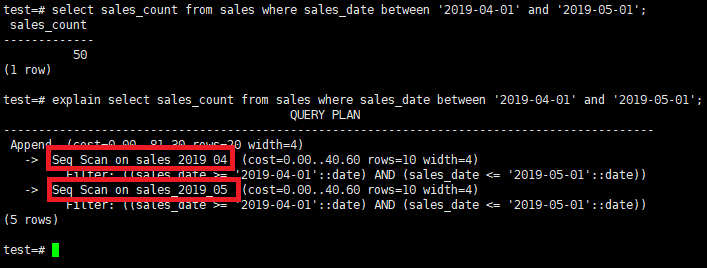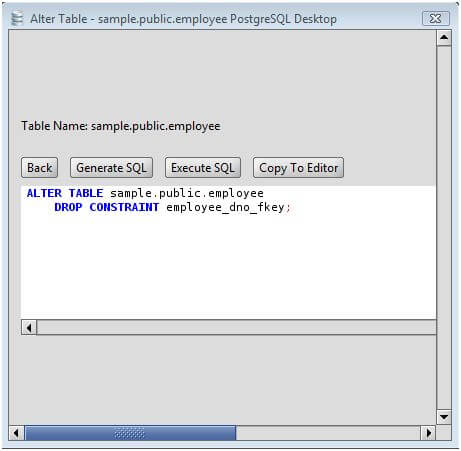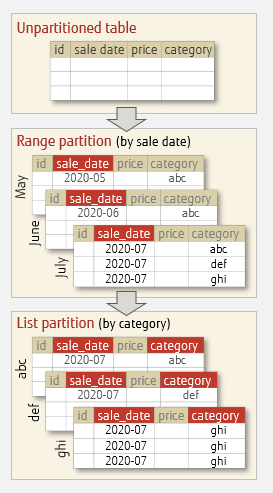

#Postgresql alter table partition by range update#
For more information on the use of statistics by the PostgreSQL query planner, refer to Section 14.2.Ĭhanging per-attribute options acquires a SHARE UPDATE EXCLUSIVE lock. Specify a value of 0 to revert to estimating the number of distinct values normally. This can be useful when the size of the table changes over time, since the multiplication by the number of rows in the table is not performed until query planning time.

For example, a value of -1 implies that all values in the column are distinct, while a value of -0.5 implies that each value appears twice on the average. When set to a negative value, which must be greater than or equal to -1, ANALYZE will assume that the number of distinct nonnull values in the column is linear in the size of the table the exact count is to be computed by multiplying the estimated table size by the absolute value of the given number. When set to a positive value, ANALYZE will assume that the column contains exactly the specified number of distinct nonnull values.
#Postgresql alter table partition by range plus#
n_distinct affects the statistics for the table itself, while n_distinct_inherited affects the statistics gathered for the table plus its inheritance children. Currently, the only defined per-attribute options are n_distinct and n_distinct_inherited, which override the number-of-distinct-values estimates made by subsequent ANALYZE operations. This form sets or resets per-attribute options. SET STATISTICS acquires a SHARE UPDATE EXCLUSIVE lock. For more information on the use of statistics by the PostgreSQL query planner, refer to Section 14.2. The target can be set in the range 0 to 10000 alternatively, set it to -1 to revert to using the system default statistics target ( default_statistics_target). This form sets the per-column statistics-gathering target for subsequent ANALYZE operations. sequence_option is an option supported by ALTER SEQUENCE such as INCREMENT BY. These forms alter the sequence that underlies an existing identity column. If DROP IDENTITY IF EXISTS is specified and the column is not an identity column, no error is thrown. These forms change whether a column is an identity column or change the generation attribute of an existing identity column. RENAME CONSTRAINT constraint_name TO new_constraint_nameĪLTER TABLE ALL IN TABLESPACE name ]ĪTTACH PARTITION partition_name AS IDENTITY

insert 300,000,000 rows into table "segment_1_000_000_to_2_000_000" with "k1" values between values 1,000,000 and 2,000,000Īlter table "partitioned" attach partition "segment_1_000_000_to_2_000_000 for values from (1000000) to (2000000) Īlter table "partitioned" detach partition "segment_1_000_000_to_2_000_000 for values from (1000000) to (2000000) įor reference, no other queries are running on the table while I do this.įurthermore, queries for min("k1") and max("k1") run very fast (~51 milliseconds) so I assume it's not attaching slow because of the range bounds check although the bounds check seems the most likely culprit for slowness.ALTER TABLE name create the table to be added as a partitionĬreate table "segment_1_000_000_to_2_000_000" ( However, it's taking a long time to attach partitions even though they have all the requisite indexes. I have a range partitioned table where I would like to be able to swap out partitions over the same range quickly (that is, re-create tables and swap out existing partitioned tables for them).


 0 kommentar(er)
0 kommentar(er)
